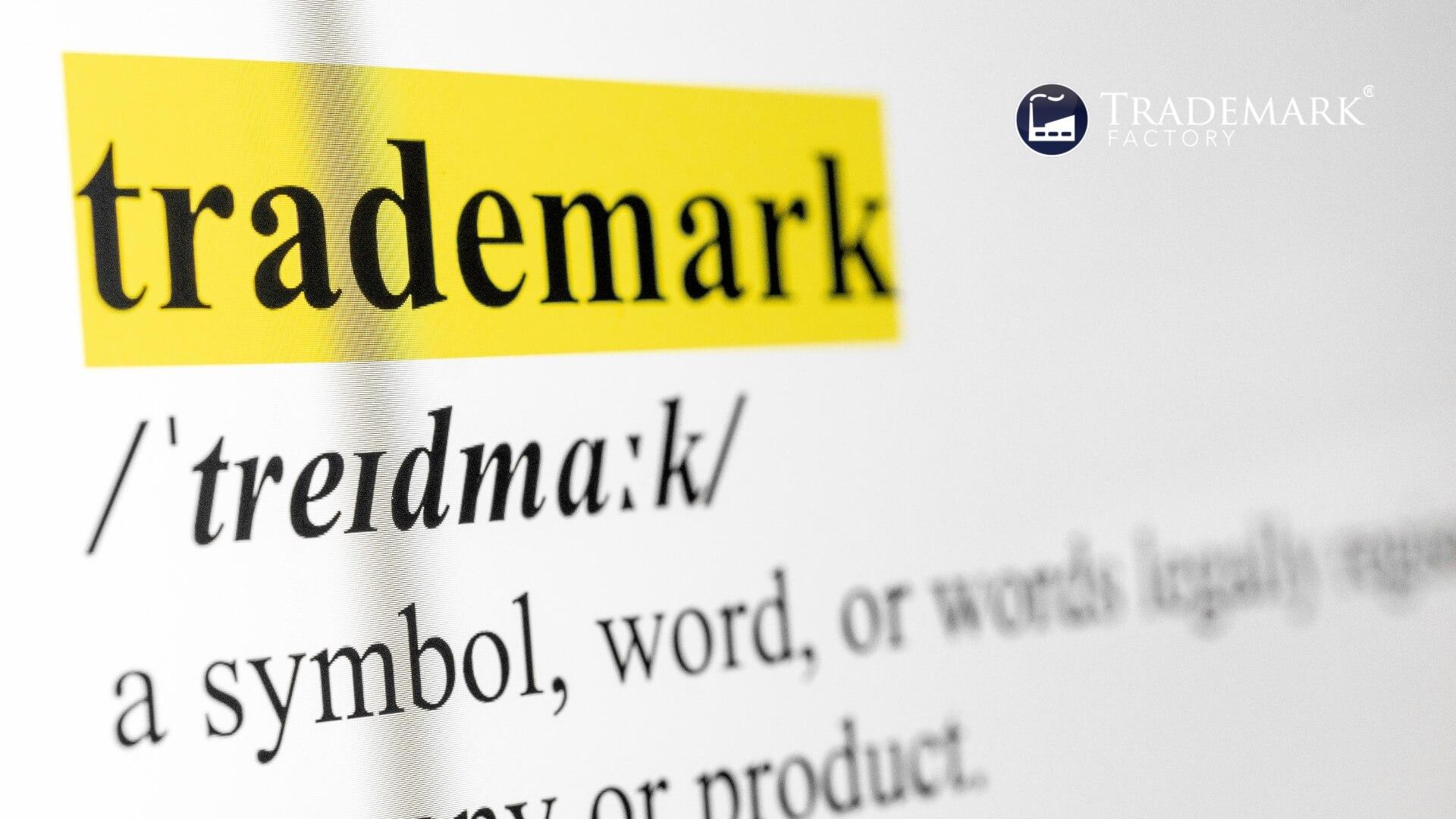Benefits Of Trademarks Comprehensive Guide

In today's competitive business landscape, introducing a trademark establishing a strong brand identity is crucial for companies seeking to distinguish themselves from their rivals and create a lasting impression on consumers. One of the most effective ways to secure and maintain this valuable intangible asset is through the acquisition of trademarks, which provide legal protection for distinctive symbols, logos, or phrases that represent an organization's products or services. Trademarks have benefits and plays an essential role in protecting brand identity and fostering consumer trust, thereby enabling businesses to reinforce their market position and gain a competitive advantage over their counterparts.
Trademarks offer numerous benefits that extend beyond merely safeguarding a company's reputation and intellectual property rights. These advantages encompass exclusive usage rights of the mark, increased brand recognition and awareness among consumers, enhanced market positioning against competitors, easier enforcement of legal rights in cases of infringement or counterfeit activities, expansion opportunities into new markets and territories with minimal risks associated with brand dilution or confusion, as well as bolstering consumer trust and loyalty towards the company's offerings. As such, understanding the multifaceted benefits of trademarks can significantly contribute to an organization's overall success by ensuring that its unique brand identity remains intact while also resonating powerfully with its target audience.
Introduction to the Benefits of Trademarks

The advantages associated with obtaining exclusive rights to a distinctive symbol or logo significantly impact the success and growth of businesses in today's competitive marketplace. Trademark definition and importance cannot be overstated, as it provides legal protection against infringement and unauthorized use by competitors. The registration process, although time-consuming and potentially costly, ensures that a business's unique identity is safeguarded from potential threats such as copycats or domain name squatters. Infringement consequences may include monetary damages, injunctions against further use of the infringing mark, and even criminal penalties for willful counterfeiting activities. Domain name protection is another crucial aspect of trademark strategy, preventing cybersquatters from profiting off your brand's reputation by registering similar web addresses. Additionally, developing international trademark strategies allows businesses to expand their reach globally while maintaining control over their brand image across borders. Ultimately, securing exclusive rights to a symbol or logo through trademark registration is an essential investment in protecting a company's brand identity and fostering long-term success in an increasingly interconnected world economy. This concept leads perfectly into the next section discussing the significance of protection of brand identity within a global market context.
Protection of Brand Identity

Safeguarding a brand's unique identity through legal means is essential in today's competitive market landscape, as it fosters consumer trust and recognition while mitigating potential conflicts with other businesses. Trademarks protect brand identity and serve as a vital tool in this process, providing comprehensive brand protection and identity safeguard by granting intellectual property rights to the owner. This legal measure ensures infringement prevention by deterring potential infringers from exploiting distinctive branding elements that are crucial for establishing a strong market presence. Moreover, trademarks help maintain a consistent brand image across various platforms and jurisdictions, which ultimately reinforces the bond between consumers and businesses. Having established the importance of securing brand identity through trademark registration, it is imperative to delve into the exclusive rights conferred upon mark owners to fully appreciate their advantages in maintaining long-term business success.
Exclusive Rights to Use the Mark

Delving into the realm of exclusive trademark rights granted to mark owners reveals a myriad of advantages that contribute significantly to sustaining long-term business success and fostering consumer loyalty. These benefits include: 1) *Exclusive ownership* which allows the trademark holder to be the sole entity with legal authority for utilizing and profiting from the mark, thus maintaining a unique brand identity; 2) *Mark longevity* as trademarks can be renewed indefinitely, enabling businesses to preserve their established reputation over time; 3) *Infringement prevention* whereby trademark law assists in protecting rightful owners from unauthorized use of their marks by competitors or counterfeiters, thereby safeguarding both business interests and consumer trust; and 4) *Revenue generation*, as trademarks can be licensed or franchised, creating additional income streams for businesses. Moreover, through international agreements and treaties, these advantages often extend beyond national borders, providing *global protection* for companies seeking to expand their reach. It is evident that these exclusive rights play a crucial role in enhancing both brand value and customer affinity – factors that ultimately pave the way for increased brand recognition and awareness.
Increased Brand Recognition and Awareness

Undeniably, the interplay between brand recognition trademarks and public perception significantly contributes to enhanced brand visibility, as businesses leverage their legally protected marks to foster an enduring connection with consumers. A multitude of studies have demonstrated a strong correlation between strategic trademark usage and increased brand recognition, leading to heightened consumer engagement which ultimately aids in establishing a solid market position. By employing awareness strategies such as targeted advertising campaigns, social media presence, and effective logo placement on products and services, companies can capitalize on the promotional impact of their trademarks. In turn, these recognition tactics help forge deeper connections with potential customers who may be seeking a sense of belonging through association with recognizable brands. The table below highlights some key factors that contribute to this relationship:
Factor
Role in Enhancing Brand Recognition
Trademark Protection
Ensures exclusive use of the mark
Targeted Advertising Campaigns
Increases visibility & reach
Social Media Presence
Connects with consumers directly
Logo Placement
Reinforces visual identity
Consumer Engagement
Fosters loyalty & connection
By leveraging these elements effectively within their marketing efforts, businesses can successfully amplify their brand perception and enjoy an elevated competitive advantage in the marketplace. As we explore further benefits of trademarks in upcoming sections, let us now delve into how they can lead to enhanced market position and competitive advantage for organizations.
Enhanced Market Position and Competitive Advantage

A strong market position and trademark competitive advantage can be achieved through the strategic use of intellectual property protection mechanisms, such as trademarks, which foster brand differentiation and customer loyalty. Implementing market dominance strategies and conducting a competitive edge analysis allows companies to identify areas where their trademark longevity can be leveraged for maximum impact. Key components involved in strengthening a brand's presence in the marketplace include:
- Brand differentiation tactics:
- Unique product offerings
- Distinctive packaging design
- Memorable taglines or slogans
- Intellectual property leverage:
- Enforcement of trademark rights against infringers
- Licensing agreements with third parties
- Strategic partnerships to expand brand reach
By harnessing these elements effectively, businesses can not only increase their overall market share but also create an environment that fosters long-term consumer loyalty. This subsequently deters potential infringers from attempting to capitalize on the goodwill associated with well-established brands and paves the way for a discussion on this topic.
Deterrence of Potential Infringers

The effectiveness of deterring trademark infringement from using similar marks hinges on the legal repercussions and successful enforcement strategies employed by trademark owners. Infringement consequences can be severe, including financial penalties, injunctions against continued use of the mark, and even destruction of infringing goods. Legal remedies available to trademark owners are essential in maintaining their exclusive rights and protecting their brand reputation. Monitoring strategies such as regular searches for unauthorized uses of a trademark or counterfeit products, coupled with proactive measures like cease-and-desist letters or litigation, contribute significantly to reducing infringement risks.
Infringement Consequences
Legal Remedies
Proactive Measures
Financial Penalties
Injunctions
Regular Searches
Destruction of Goods
Damages Compensation
Cease-and-Desist Letters
Reputation Damage
Court Orders
Litigation
Loss of Market Share
Settlement Agreements
Counterfeit Prevention Plans
Trademark protection not only deters potential infringers but also grants the owner an opportunity to expand their business through licensing agreements and franchising arrangements, further solidifying their market position.
Ability to License and Franchise the Mark

Exploiting the potential of trademark licensing and franchising arrangements can substantially enhance a mark owner's market presence, generating remarkable revenue streams and fostering brand loyalty among consumers. This can be achieved through various strategies, including:
1. **Licensing revenue**: By granting third parties the right to use their trademarks in exchange for royalties, businesses can generate significant income without investing in production, distribution or marketing efforts.
2. **Franchise growth**: Franchising allows companies to expand their operations by granting independent operators the rights to use their marks and business systems, resulting in rapid market penetration while minimizing capital investment.
3. **Mark monetization**: Trademarks offer valuable opportunities for monetization through strategic partnerships with other businesses that complement the core offerings of the mark owner, creating synergies and enhancing consumer experiences.
4. **Diversification opportunities**: Licensing and franchising enable businesses to explore new verticals or product categories without substantial financial risk, as partners bear much of the responsibility for success.
The ability to leverage these benefits contributes significantly to a company's competitive advantage and ultimately leads to an increased value of the business that will be discussed further in subsequent sections.
Increased Value of the Business

Significant enhancement in a company's competitive advantage and market presence can be achieved through effective utilization of licensing and franchising strategies, ultimately leading to an increased overall business valuation. The value of business trademarks as intellectual property assets plays a crucial role in revenue generation, mergers and acquisitions, and the development of legal strategies aimed at protecting the brand. For instance, well-established trademarks have been known to significantly contribute to the financial success of global brands such as Apple, Coca-Cola, Google, and Amazon.
Business Valuation
Intellectual Property
Revenue Generation
Mergers Acquisition
Legal Strategies
Competitive Advantage
Market Presence
Licensing
Franchising
Brand Protection
Global Brands
Trademark Value
These examples demonstrate how strong trademarks not only add monetary value but also create a sense of belonging for customers who identify with these popular brands. In conclusion, by bolstering their intellectual property portfolios with valuable trademarks, businesses can increase their overall worth and position themselves more favorably for future growth opportunities or potential partnerships. Easier enforcement of legal rights is another key benefit offered by strong trademark protection that will be discussed further in the following section.
Easier Enforcement of Legal Rights

In addition to increasing the value of a business, trademarks legal enforcement also play a pivotal role in facilitating the enforcement of legal rights. Trademark infringement prevention becomes more manageable when a company has registered its intellectual property since it raises legal rights awareness among competitors and potential infringers. This heightened awareness often acts as a deterrent, reducing instances of unauthorized use of protected marks. Moreover, intellectual property enforcement is simplified through trademark ownership, as it provides businesses with clear-cut evidence to support their claims in case disputes arise. Consequently, litigation cost reduction can be achieved by avoiding lengthy and complex negotiations or court battles that would otherwise arise from poorly defined brand protection. A well-established trademark thus empowers businesses to take swift action against infringers while minimizing disruption to their operations. Additionally, having a robust legal foundation for protecting one's intellectual property paves the way for smoother expansion into new markets and territories without constant concerns about potential infringements or conflicts with previously established brands in those regions.
Expansion into New Markets and Territories

Navigating the complexities of entering new markets and territories can be made more manageable with a well-established intellectual property foundation, facilitating smoother international growth and reducing potential conflicts. A strong trademark market expansion serves as a valuable asset in global expansion, helping businesses to overcome territory challenges such as cultural adaptation, market research, and localization strategies. Through meticulous planning and understanding of each target market's unique characteristics, businesses can leverage their trademarks to create consistent branding that resonates with local consumers while maintaining their core identity. In addition, an internationally recognized trademark can streamline legal processes across various jurisdictions by providing clearer paths for enforcement against infringement or unauthorized use. Ultimately, this solid intellectual property foundation not only supports business growth but also paves the way for increased consumer trust and loyalty in the subsequent stages of expansion.
Increased Consumer Trust and Loyalty

Elevated levels of consumer confidence and allegiance can be achieved through the strategic use of well-established intellectual property, fostering a perception of quality and reliability in the minds of potential buyers. Trademarks consumer trust play a vital role in trust building strategies by establishing emotional connections between consumers and brands, leading to increased brand loyalty and customer retention.
- **Consumer confidence:** A strong trademark reassures customers that they are purchasing from a reputable source, thereby increasing their confidence in the brand.
- **Brand loyalty:** When consumers identify with a brand's trademark, they are more likely to form an emotional bond, which results in higher levels of loyalty.
- **Trust building strategies:** A well-known trademark serves as an assurance to customers that the products or services adhere to high-quality standards, creating trust between the consumer and the company.
- **Emotional connections:** Consumers often develop an emotional connection with their favorite brands' trademarks; this connection strengthens their preference for those brands over competitors.
As these benefits demonstrate, trademarks significantly contribute to bolstering a firm's reputation while also cultivating long-lasting relationships with its clientele – essential factors for sustained success in today's competitive marketplace. This ultimately leads us toward understanding how these advantages culminate into overall business growth and expansion opportunities.
Conclusion

Cultivating a robust brand presence through the strategic implementation of intellectual property rights not only enhances consumer trust and loyalty, but also paves the way for long-term business growth and expansion opportunities. Trademark longevity ensures that businesses can continue to benefit from their established reputation, while global protection allows them to expand into international markets with confidence. In addition, securing trademarks helps companies avoid costly infringement battles by asserting their rightful ownership over unique elements of their brand identity. Furthermore, trademark registration aids in resolving domain disputes and counterfeiting prevention efforts, which are essential in maintaining a strong online presence and protecting consumers from potentially harmful counterfeit products. Ultimately, investing in trademarks should be an integral component of any organization's growth strategy as it enables them to reap numerous benefits while mitigating risks associated with intellectual property disputes and counterfeit goods.
Frequently Asked Questions

What are the costs associated with registering and maintaining a trademark?
The costs associated with registering and maintaining a trademark encompass various factors, including application fees, legal expenses for application assistance, and potential expenses incurred during trademark disputes. While protecting brand recognition and mitigating infringement consequences are among the primary reasons for acquiring registered trademarks, unregistered benefits may also be considered in estimating the overall costs. These benefits could include common law rights that arise from using a mark without registration. Nonetheless, it is essential to evaluate these costs in relation to a company's long-term goals and market positioning strategies, as securing a strong trademark can contribute significantly towards fostering a sense of belonging among its target audience while simultaneously boosting brand loyalty and reputation.
How long does the trademark registration process typically take?
The trademark registration process, often subject to a variable timeline contingent on multiple factors, typically spans a period of several months to over a year. A range of potential registration obstacles may arise during this process, including oppositions from third parties, office actions requiring applicant responses, or errors in the application itself. Applicants seeking expedited processing may consider availing certain options offered by trademark offices; however, these are not universally available and usually involve additional fees. The impact of delays can be significant for businesses seeking to protect their brand identity and market positioning; therefore, conducting thorough research and following expert application tips (such as ensuring accurate classification of goods/services and submitting comprehensive evidence of use) are crucial in navigating the complexities of the trademark registration process while minimizing potential setbacks.
Can a trademark be registered for multiple categories of goods and services?
Category overlaps in trademark registration are indeed possible, allowing for comprehensive protection of intellectual property across multiple categories of goods and services. A diversified portfolio can be achieved through the utilization of the trademark classification system, which comprises a hierarchical arrangement of classes that cater to various industries and sectors. By registering a trademark under several classifications, businesses can secure their brand identity and reputation in diverse markets, effectively safeguarding their interests and fostering a sense of belonging among consumers who recognize and trust the symbol or logo associated with a particular product or service. This multi-faceted approach ensures that organizations maintain control over their intellectual property while simultaneously expanding their reach within an increasingly competitive global marketplace.
If my trademark is registered in one country, is it automatically protected in other countries as well?
In addressing the question of whether trademark registration in one country ensures automatic protection in other jurisdictions, it is essential to highlight the global protection challenges that arise due to differences in country-specific trademark laws. Although some level of trademark reciprocity exists through international treaties and agreements such as the Madrid Protocol, comprehensive safeguarding against cross-border infringement necessitates separate registrations within individual countries. Nevertheless, international registration benefits can be achieved by strategically filing for protection within key markets, ensuring a more cost-effective approach towards securing brand identity across borders. Thus, while trademarks do not inherently receive worldwide coverage upon single-country registration, a well-planned approach to intellectual property rights management can mitigate risks and enhance enforcement capabilities in an increasingly interconnected global marketplace.
How often do trademarks need to be renewed, and what is the process for renewal?
Trademark expiration necessitates adherence to renewal deadlines in order to maintain the legal protection afforded by registration. Typically, trademarks must be renewed every 10 years, although this may vary depending on the jurisdiction. Utilizing an online renewal system can streamline the process and ensure timely submission of required renewal documents, such as a declaration of continued use or proof of distinctiveness. However, renewal challenges may arise due to changes in trademark usage or classification over time, thus necessitating vigilance on the part of trademark owners to preserve their valuable intellectual property rights and continue reaping the benefits associated with their registered marks.
Conclusion

In conclusion, trademarks offer numerous advantages for businesses and entrepreneurs seeking to establish a strong presence in the market. These benefits range from protection of brand identity to exclusive rights to use the mark, enhanced market position, easier enforcement of legal rights, expansion into new markets, and increased consumer trust.
Overall, securing a trademark remains an essential component of any successful business strategy. This investment not only safeguards the company's valuable intellectual property but also contributes significantly to its growth and long-term profitability.
Subscribe to Trademark Wednesdays, our weekly newsletter where we'll send fun and informative trademarking topics straight to your inbox.




